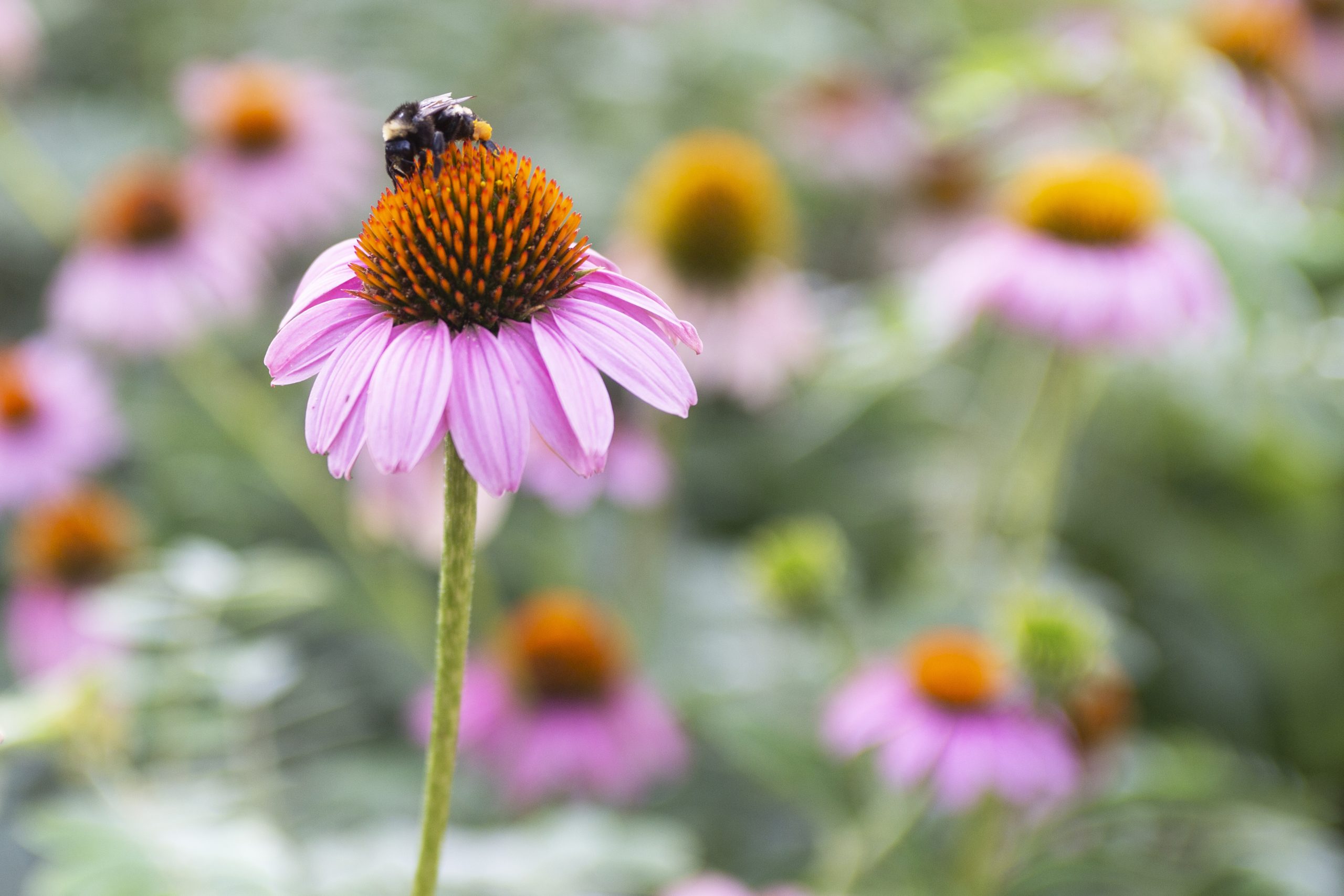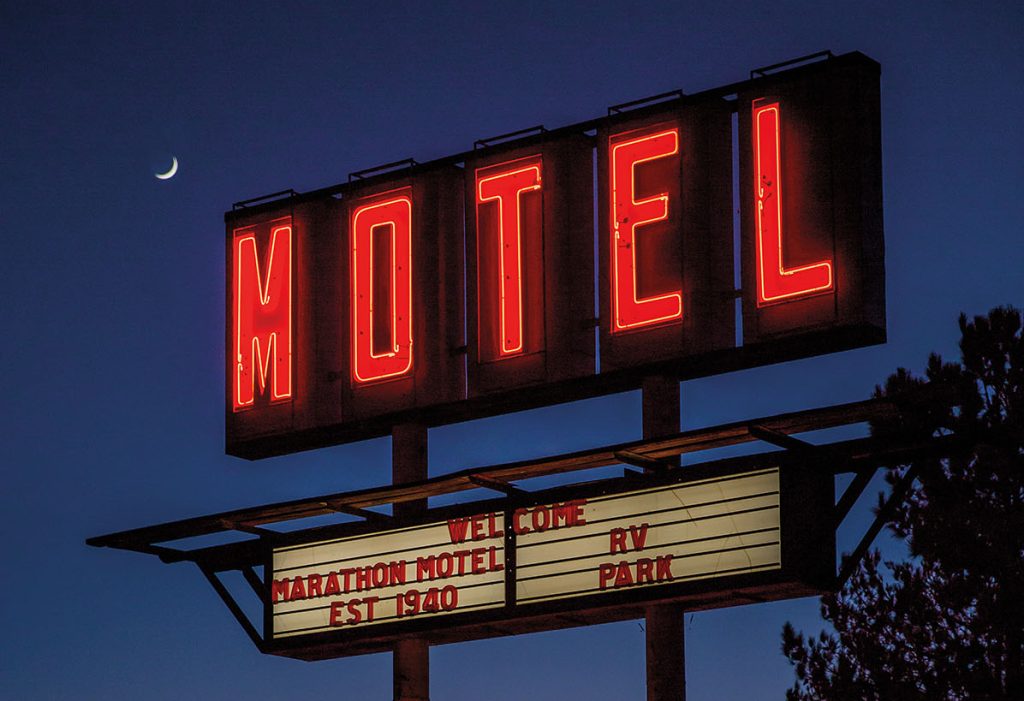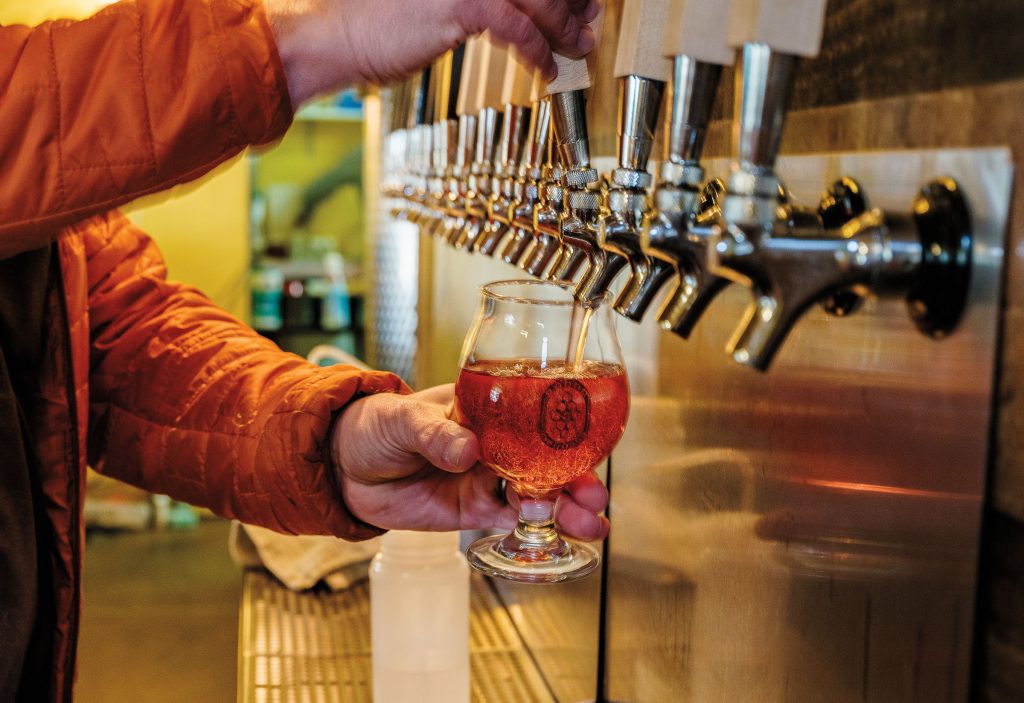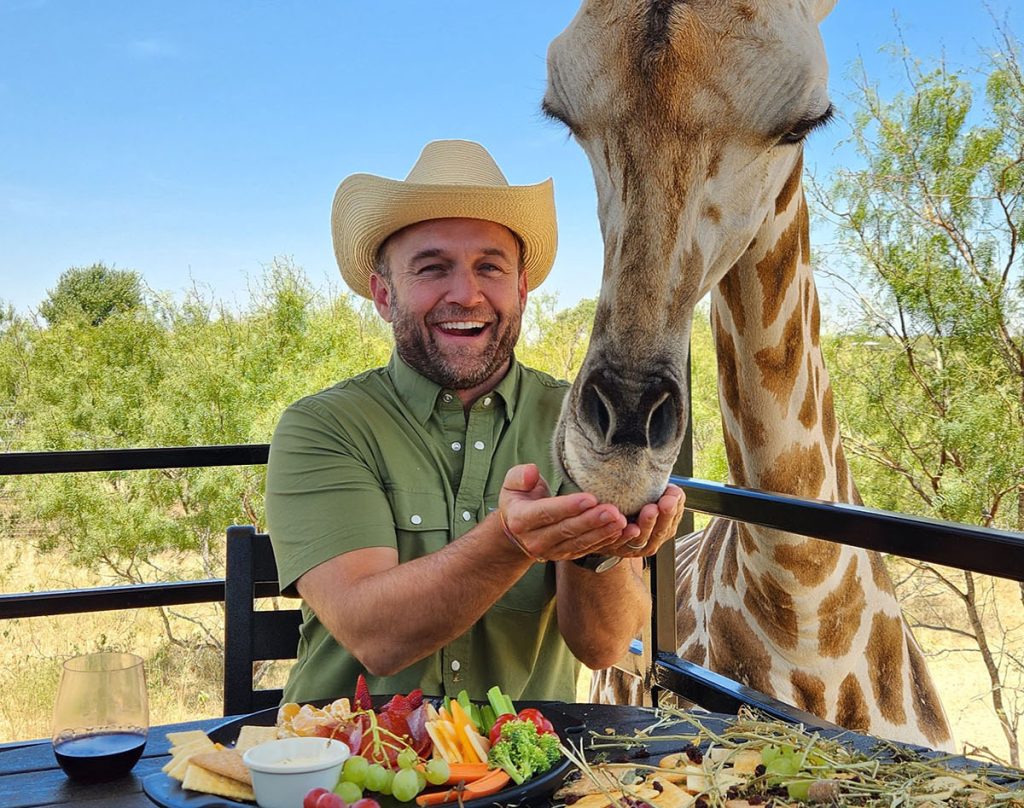
A bee on echinacea at the Lady Bird Johnson Wildflower Center in Austin. Photo by Jen Reel
Last summer, months of brutal temperatures and drought parched Texas, baking the landscape into a crisp dead brown. But as spring dawns across the Lone Star State, those fields are once again blooming with wildflowers.
The explosion of color along highways and pastures is due to the rains that arrived in fall and late winter, says Andrea DeLong-Amaya, director of horticulture at the Lady Bird Johnson Wildflower Center in Austin. But the crop of wildflowers this year is also likely to be helped along by an unlikely ally: the drought conditions from last summer, which wiped out some of the bushy perennial flowers that otherwise compete with spring-blooming annuals.
“Nature does not like a gap, so those fast-growing annuals take advantage,” DeLong-Amaya says.
The combination of greater soil moisture and unusual early spring warmth has also moved up the growing season for some of the state’s earlier bloomers, like bluebonnets, which are already beginning to carpet grassy areas throughout Central, South, and West Texas. “We have a good bumper crop of bluebonnets that are starting a little early,” DeLong-Amaya says. “Typically, they don’t peak until sometime in mid-April—this year it’s looking like it’s going to be a little earlier than that. By end of March, it’ll be the peak.”
Other flowers seem to be on a more normal schedule, DeLong-Amaya says. Flowering trees like redbuds, Mexican plums, and Texas mountain laurels are all in full flower, while early spring flowers—southern dewberry, golden groundsel, goldeneye phlox, anemones, and buttercups, to name a few—are all coming up as well throughout Central and East Texas. Later this month, they’ll be joined by pink primroses, Engelmann daisies, and Indian paintbrushes. In North Texas, winecup, Texas stars, prairie verbena, and horsemint should be going by mid to late spring. Out in West Texas, a drier winter is likely to mean less impressive displays—but DeLong-Amaya notes that could change with one good rain.
For the best wildflower experience, DeLong-Amaya recommends getting outside around April, when bluebonnet season will have petered out and opened up space for other wildflowers. While a drive along the highway is a popular method of sampling wildflowers, she suggests driving along backroads, or going for hikes to inspect species seldom seen from a car—including antelope horn and butterfly milkweed, penstemons, and discrete but lovely scarlet pea. “I like to encourage people to get out and see things up close, because there are some really cute things out there,” she says.
If Texas is lucky enough to get consistent rain throughout the late spring, wildflower season might even linger into June. But don’t bet on it: Predicting the wildflower season is as tricky as predicting the weather, DeLong-Amaya says, and circumstances can change quickly depending on the temperatures and levels of rain. As with last year, the winter and spring rains have been about average, and the summer seems likely to be a scorcher. “If we get dried out, everything will come to a screeching halt.”
For now, though, Texas’ open landscapes are a bouquet of colors. For help figuring out specific species’ growing schedules, visit the Lady Bird Johnson Wildflower Center’s website.








